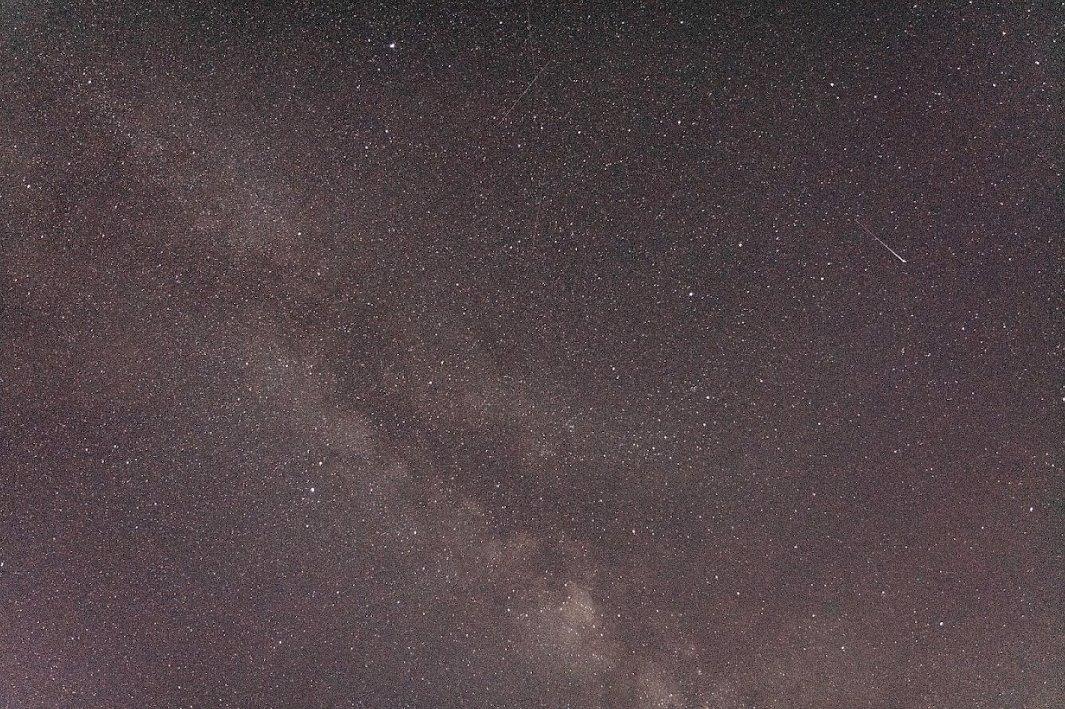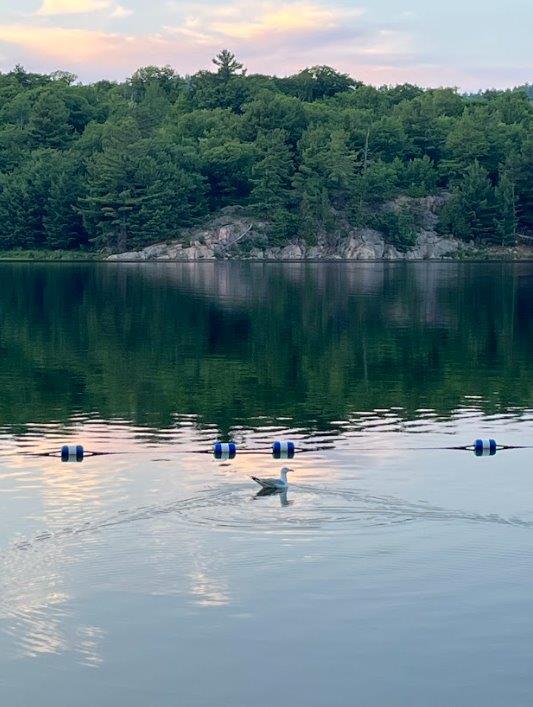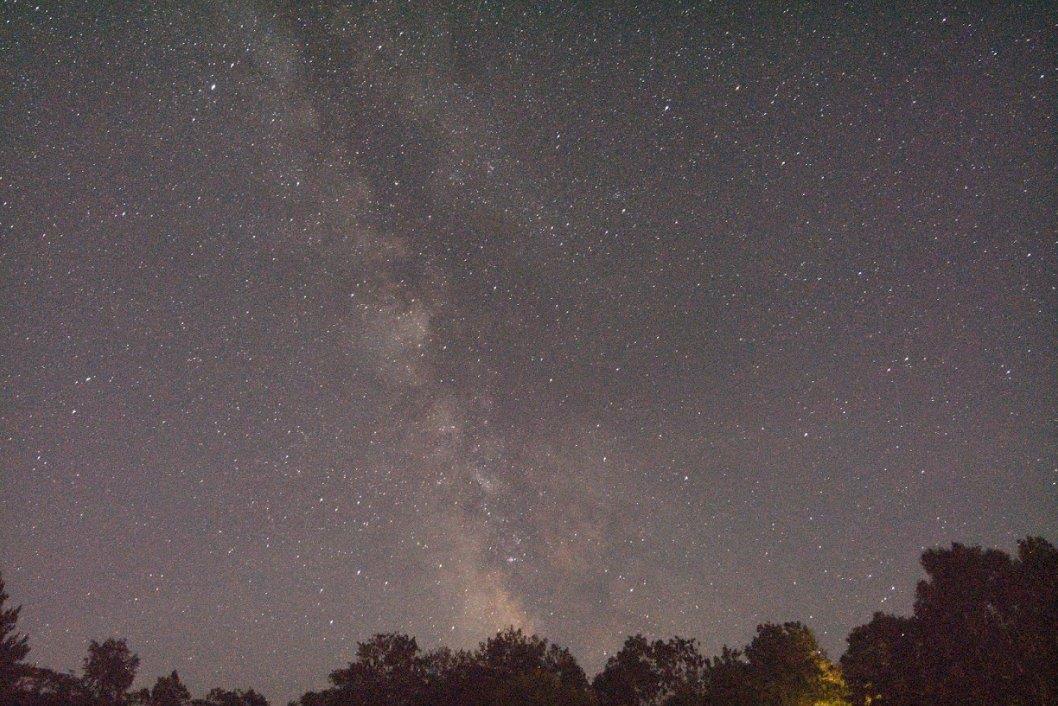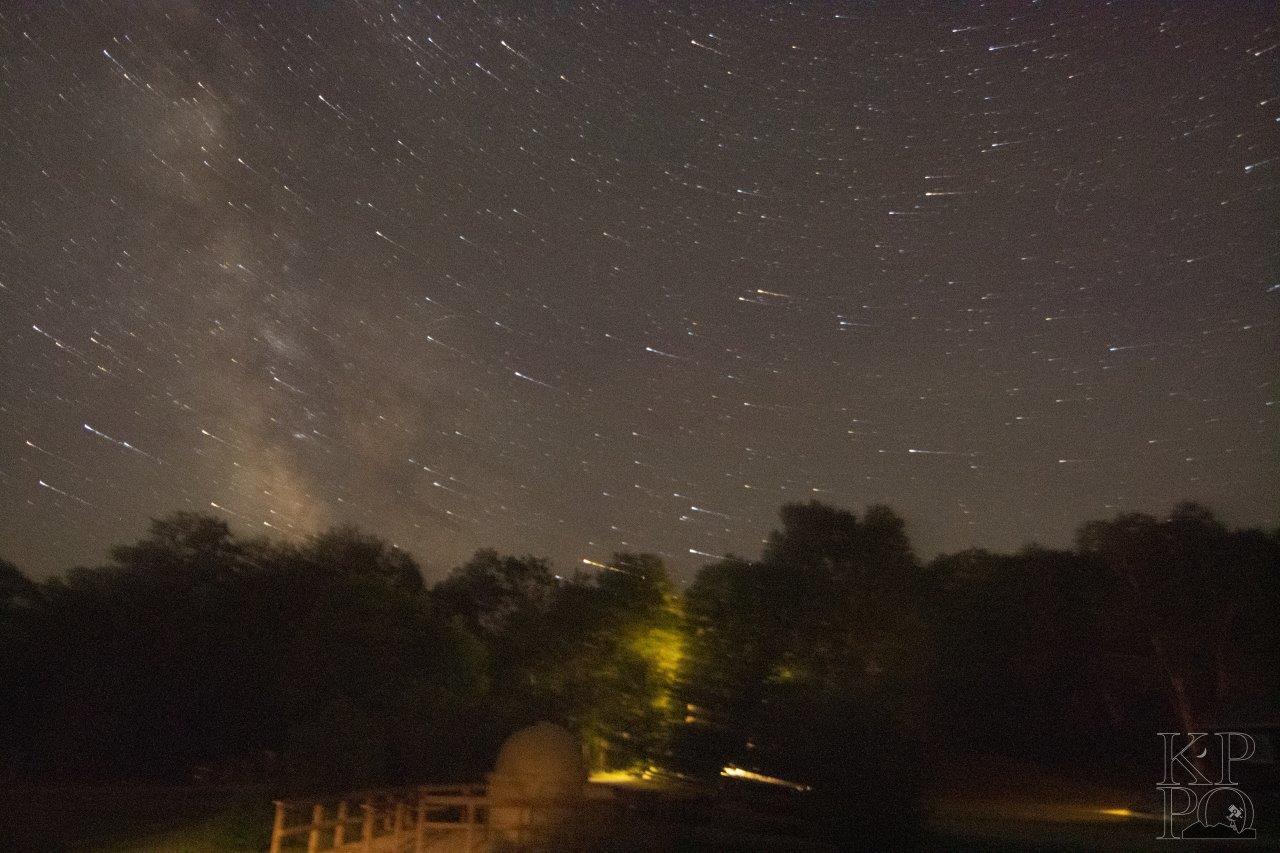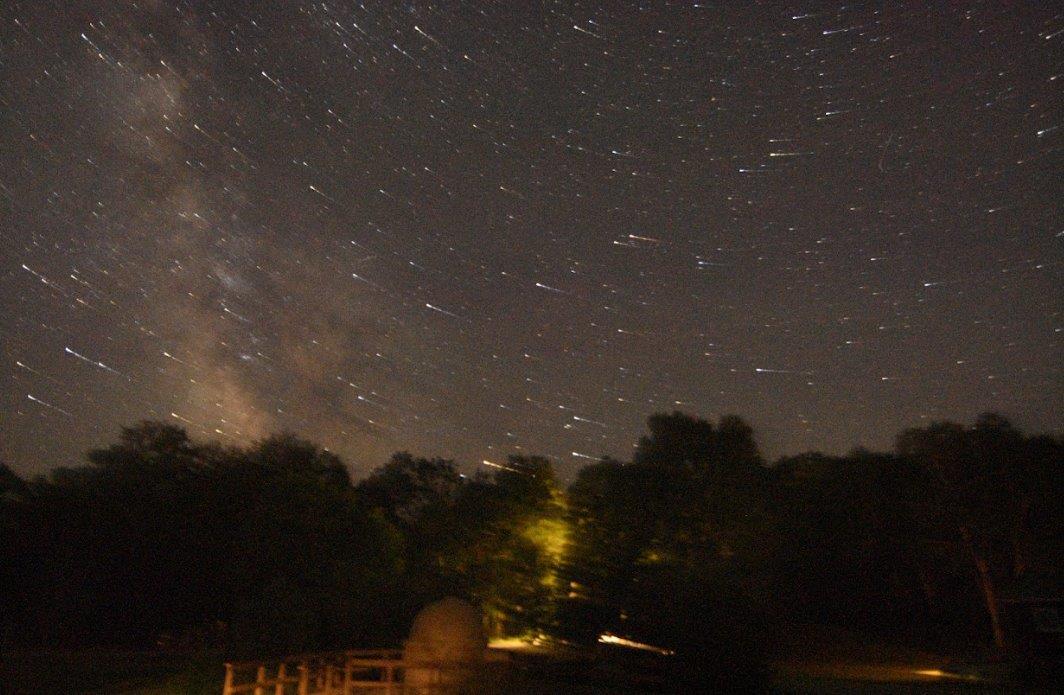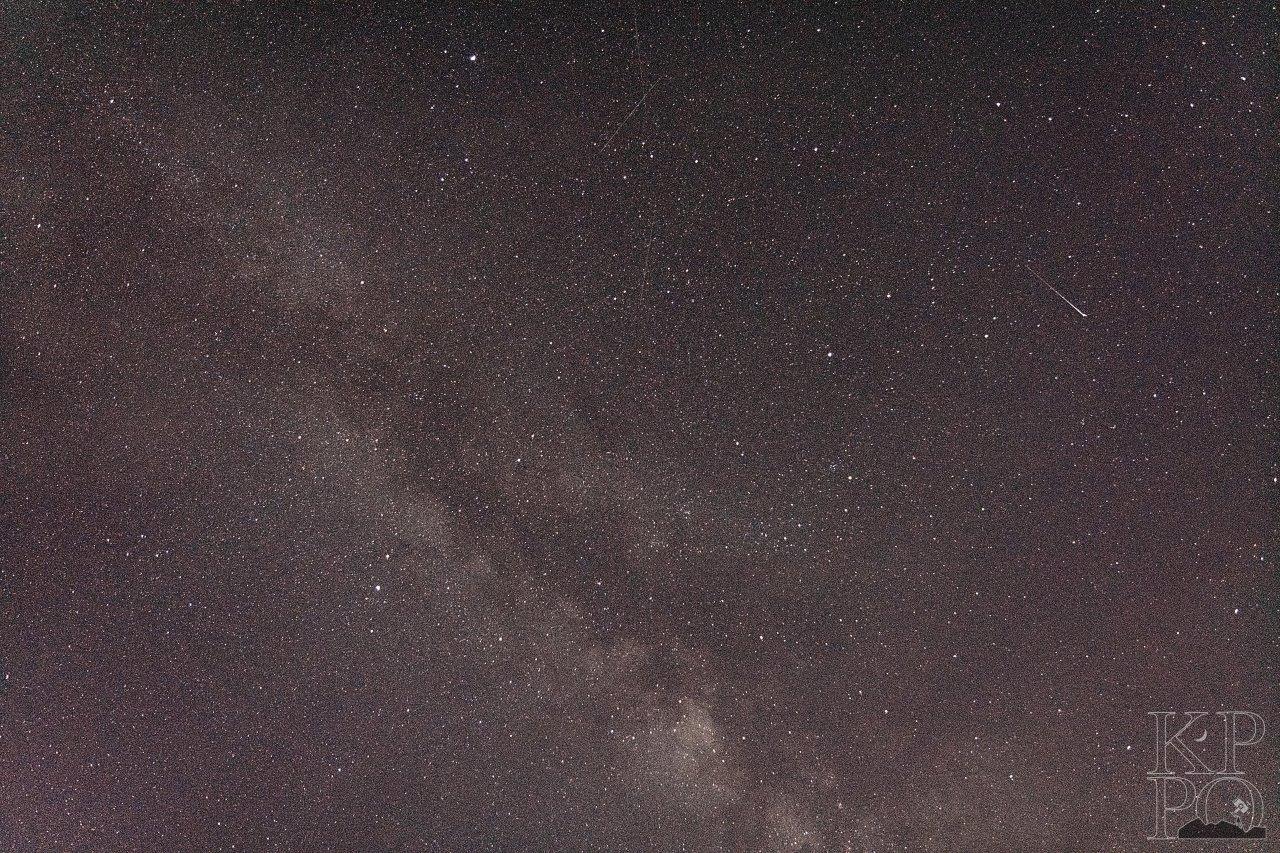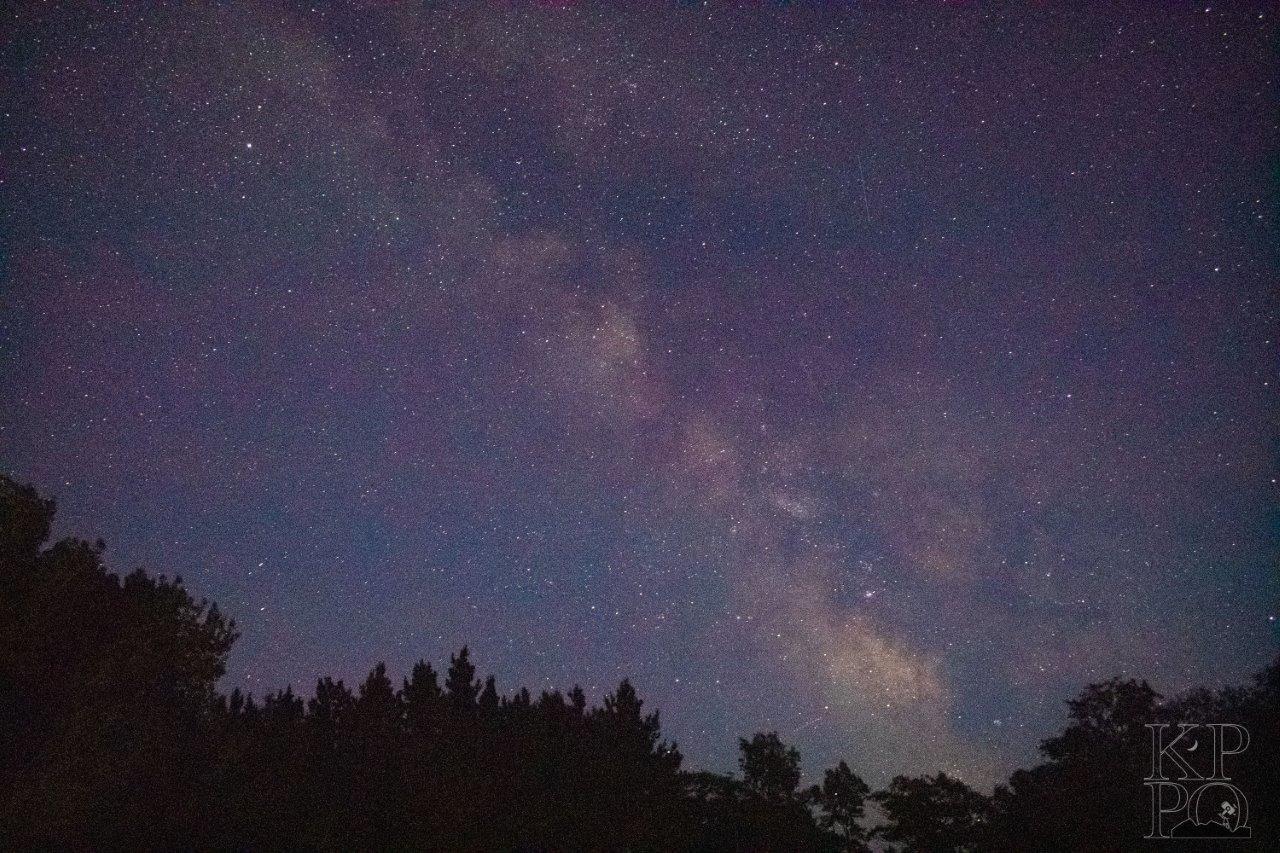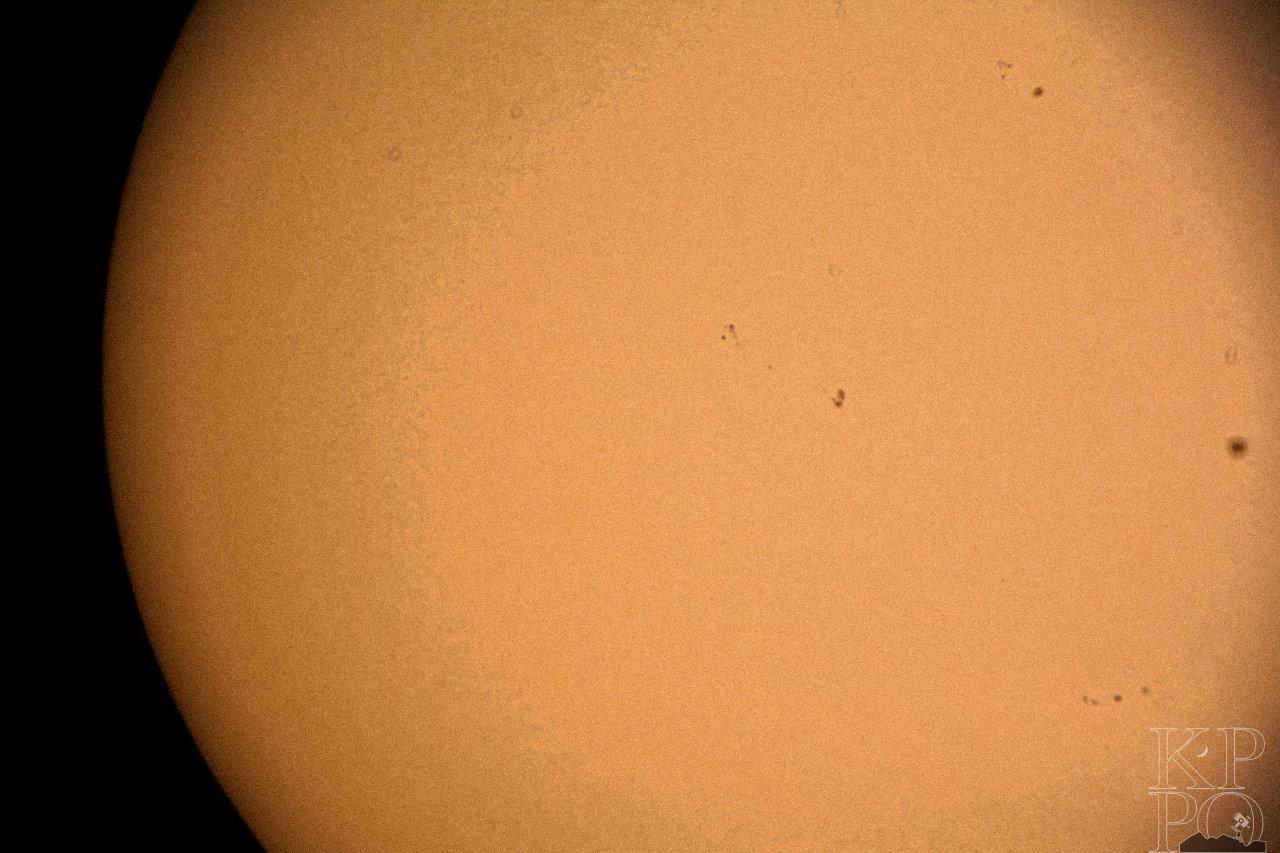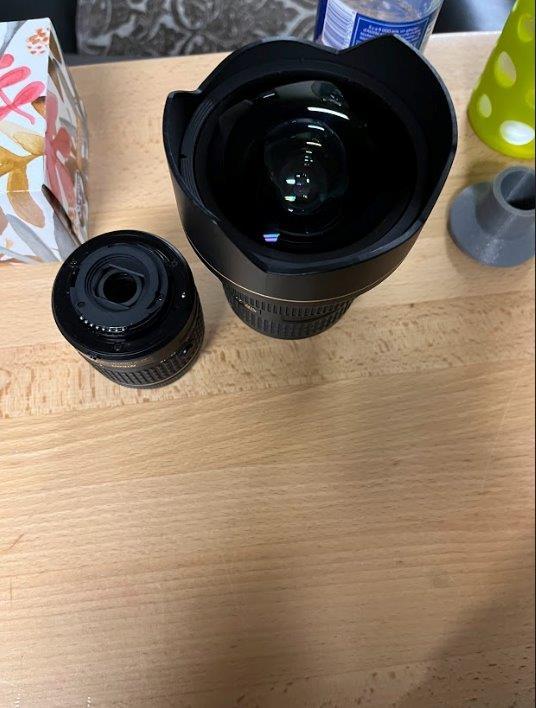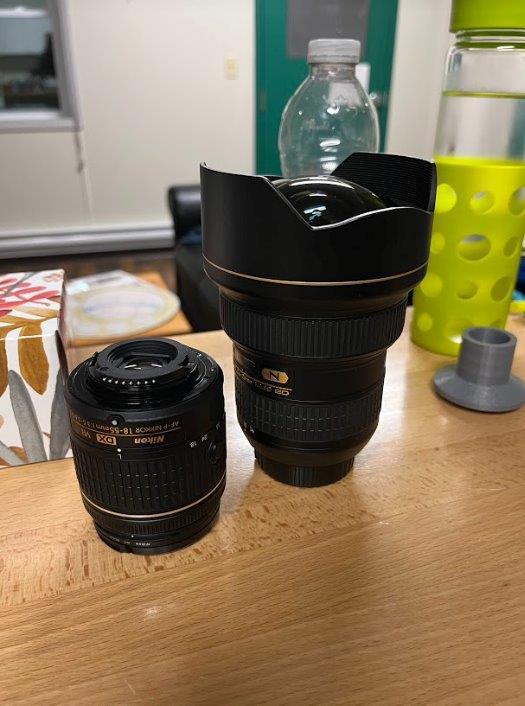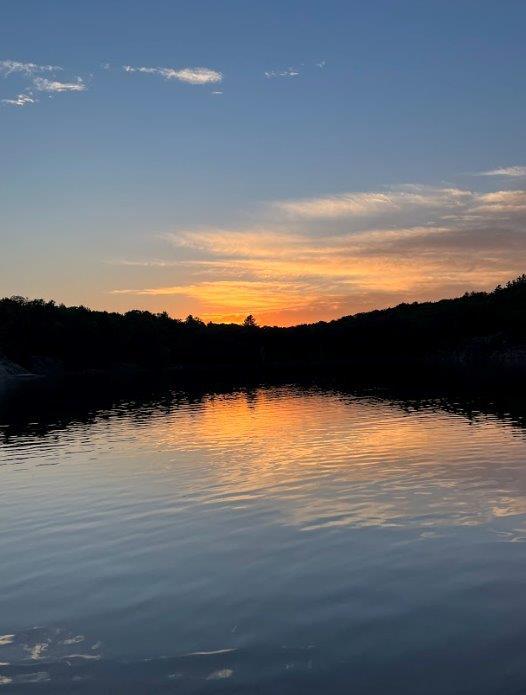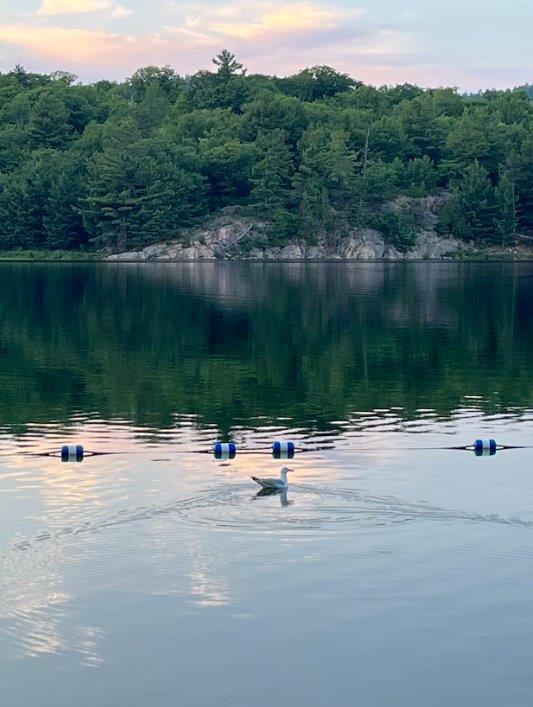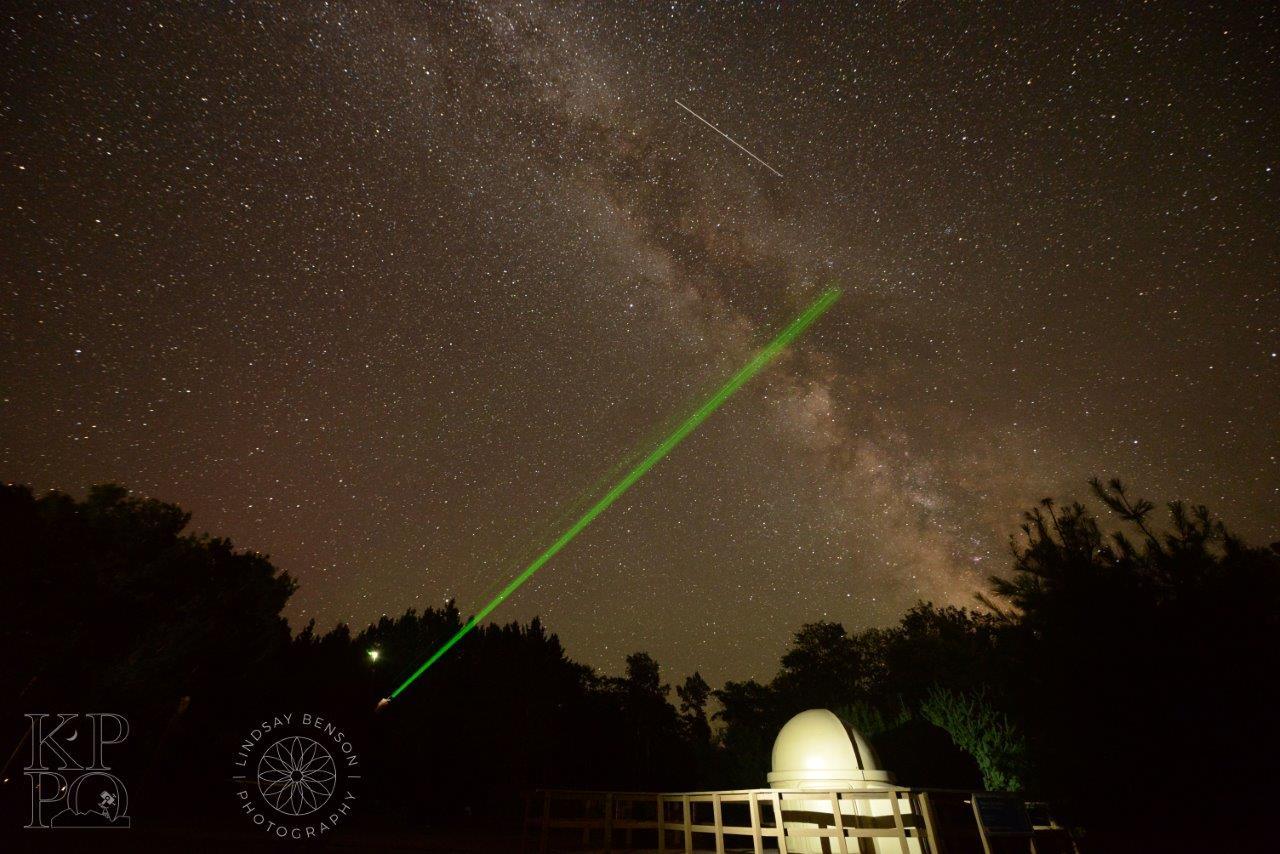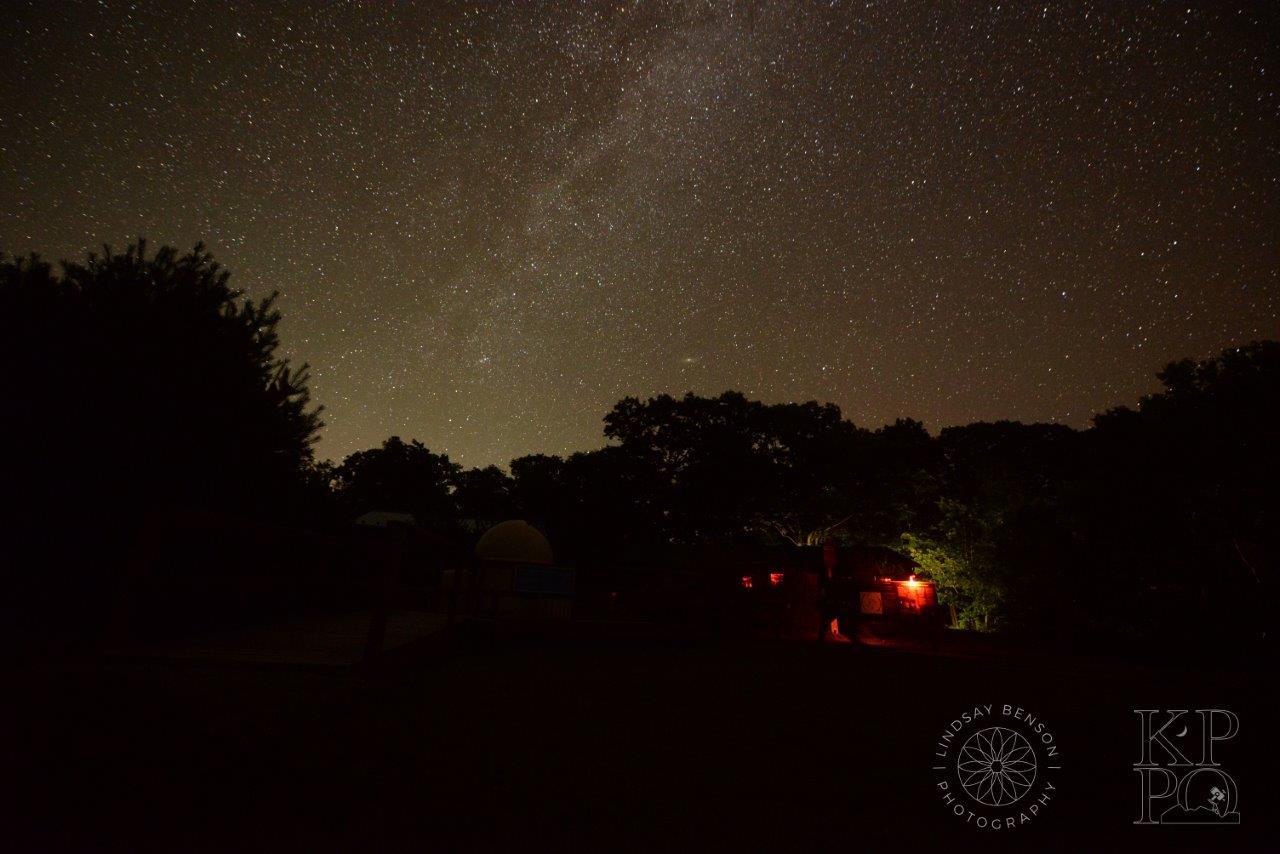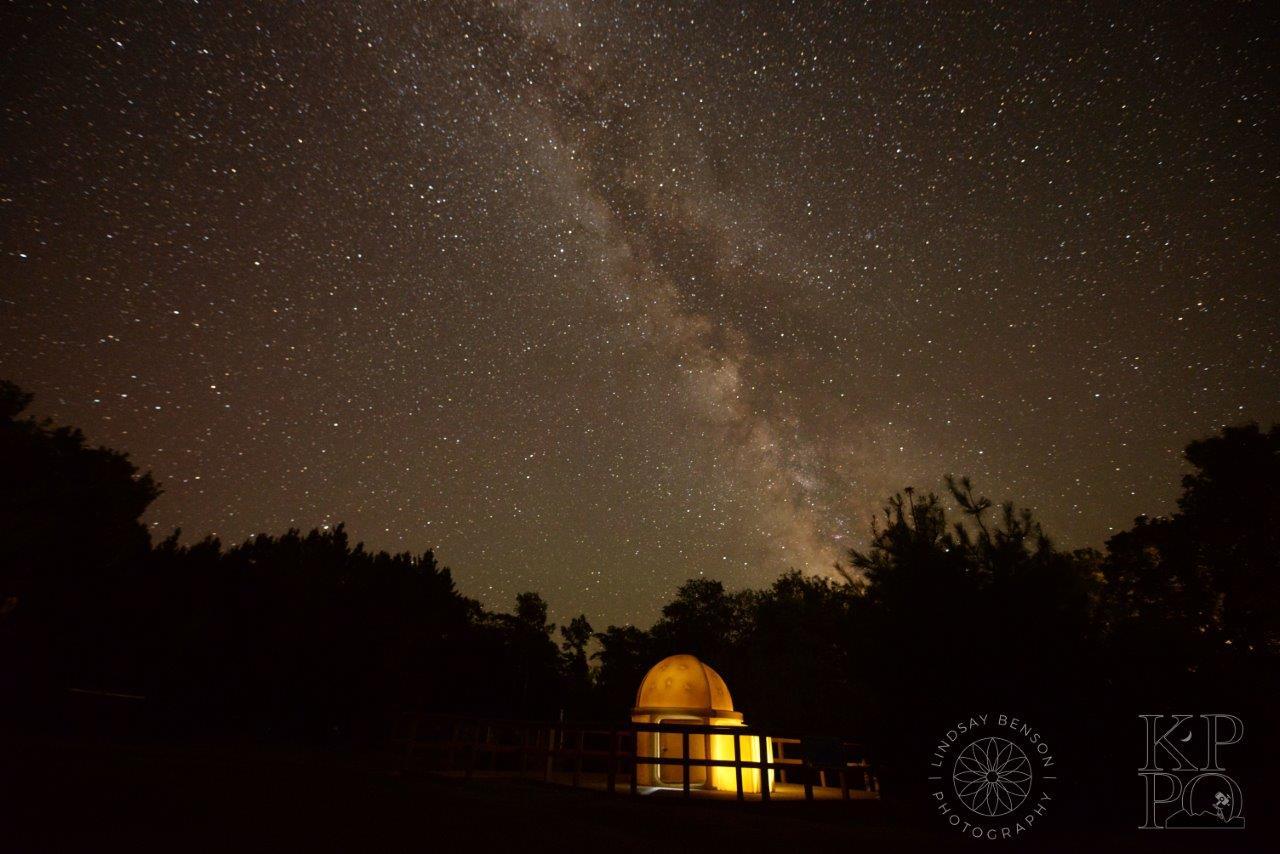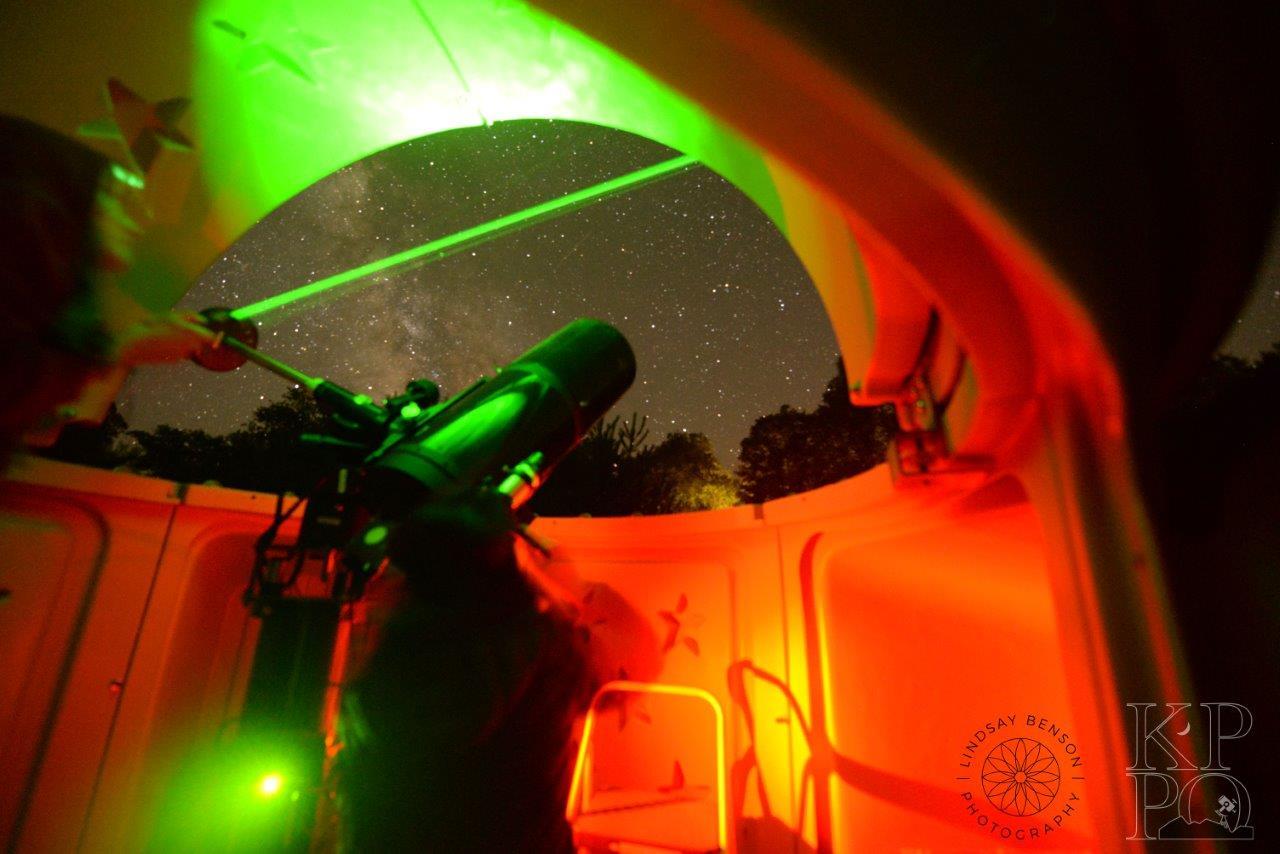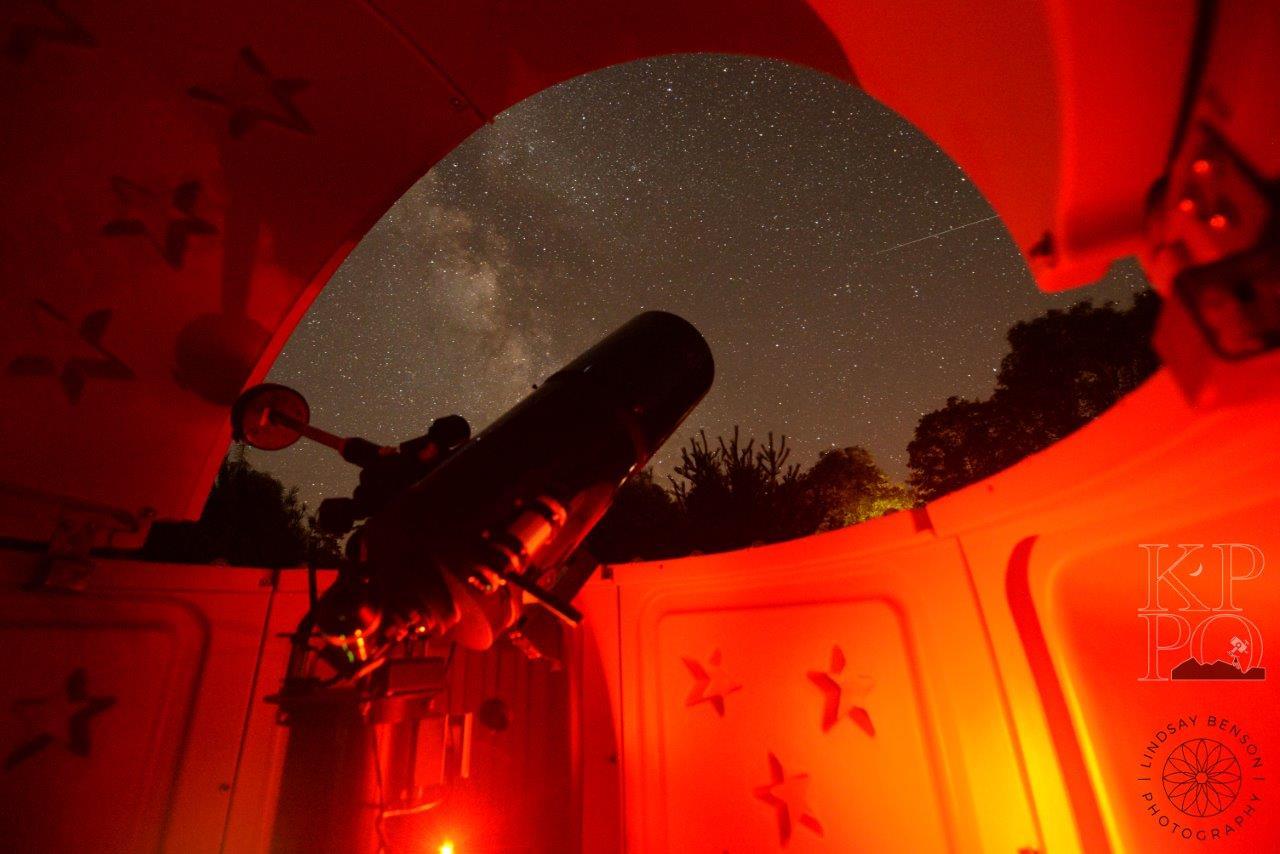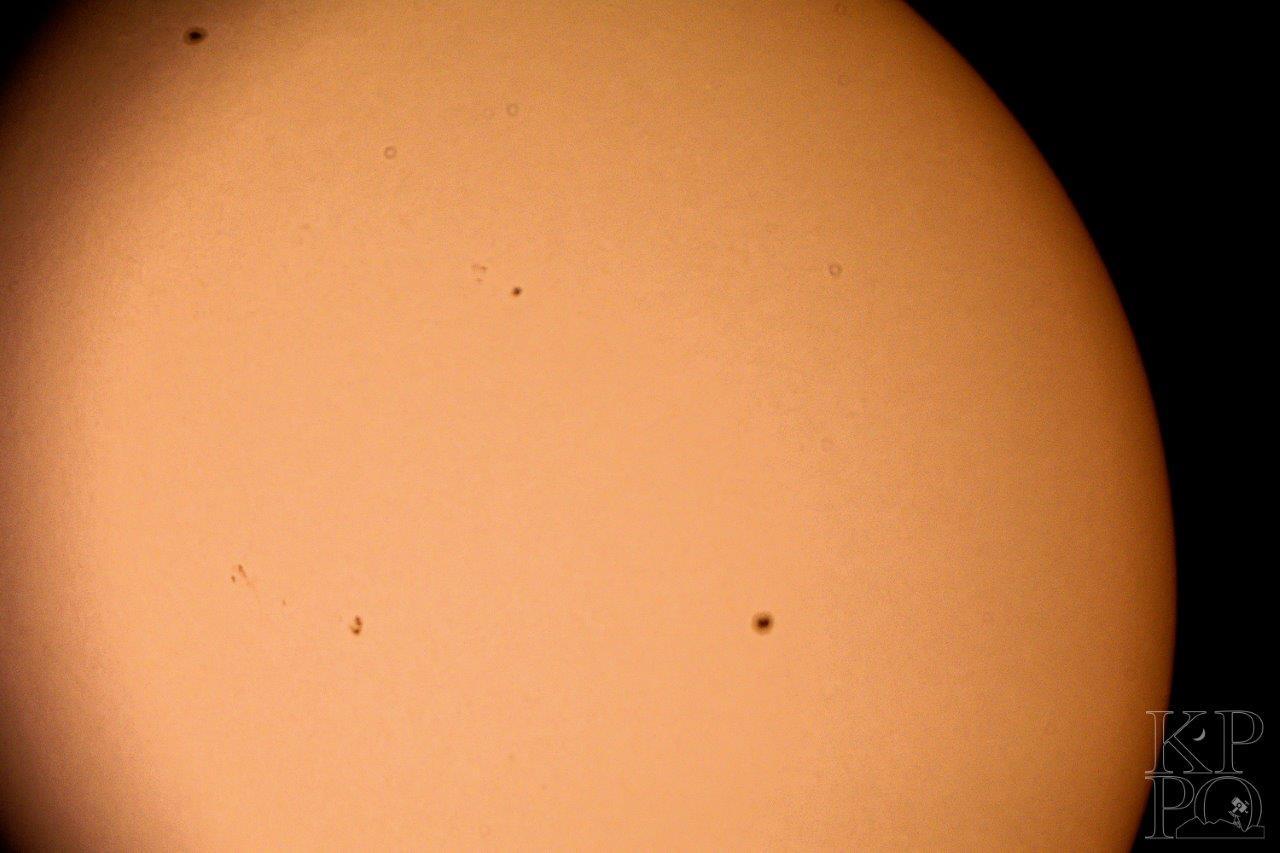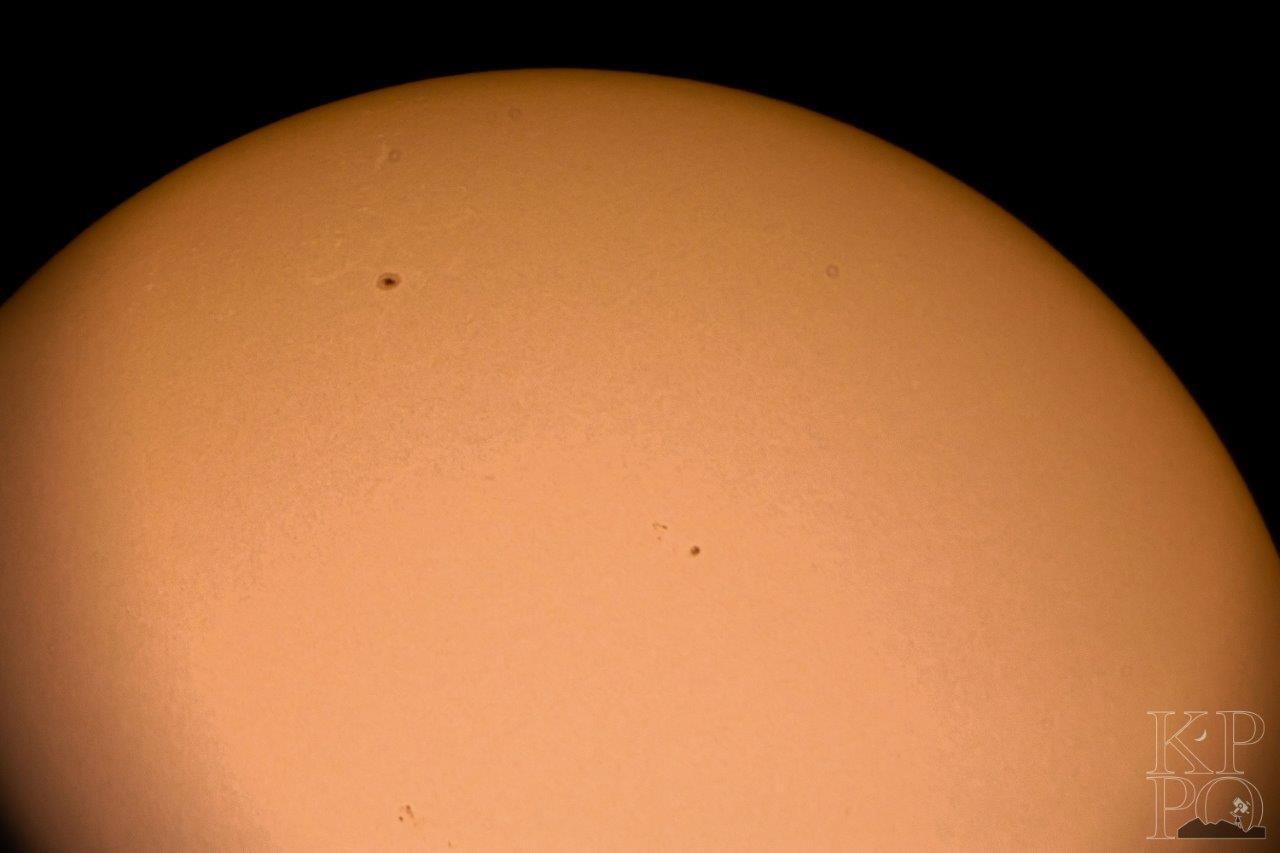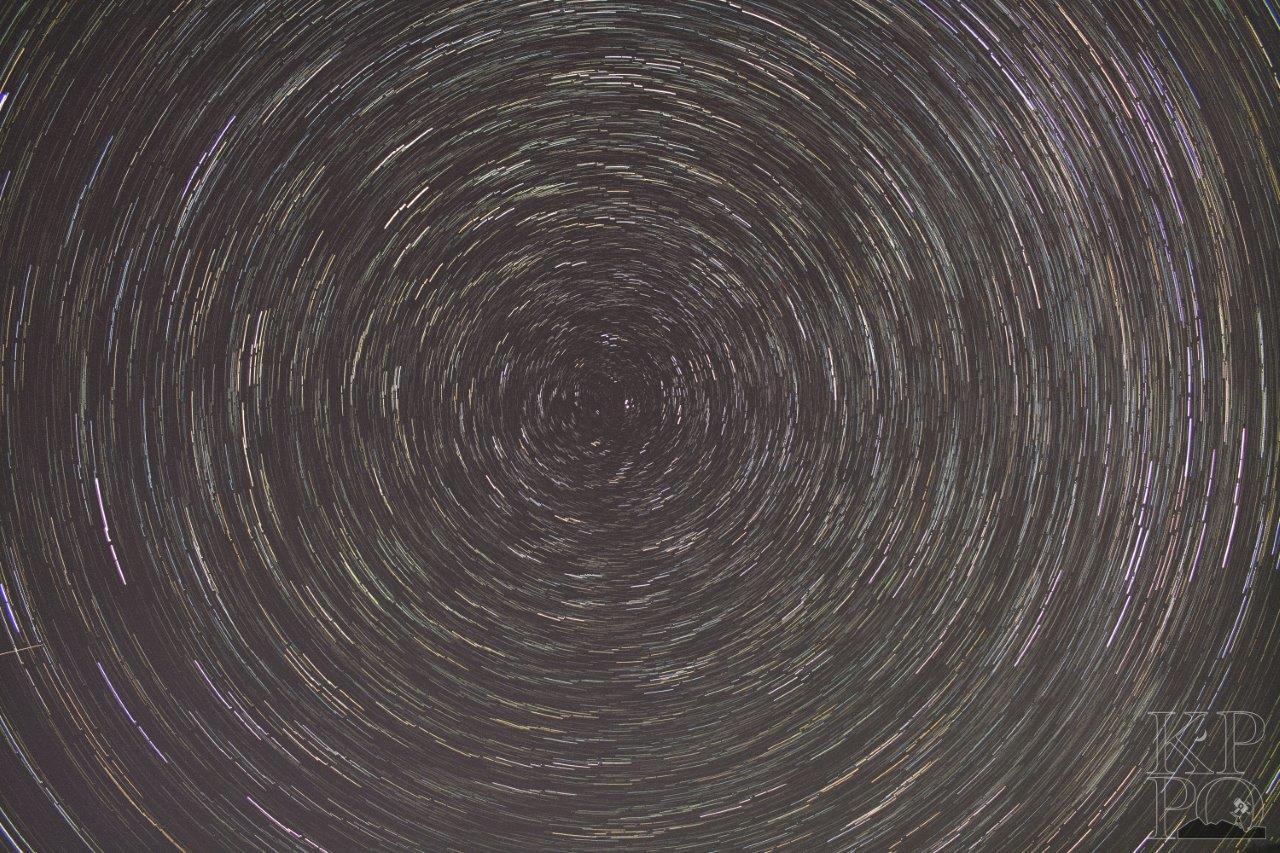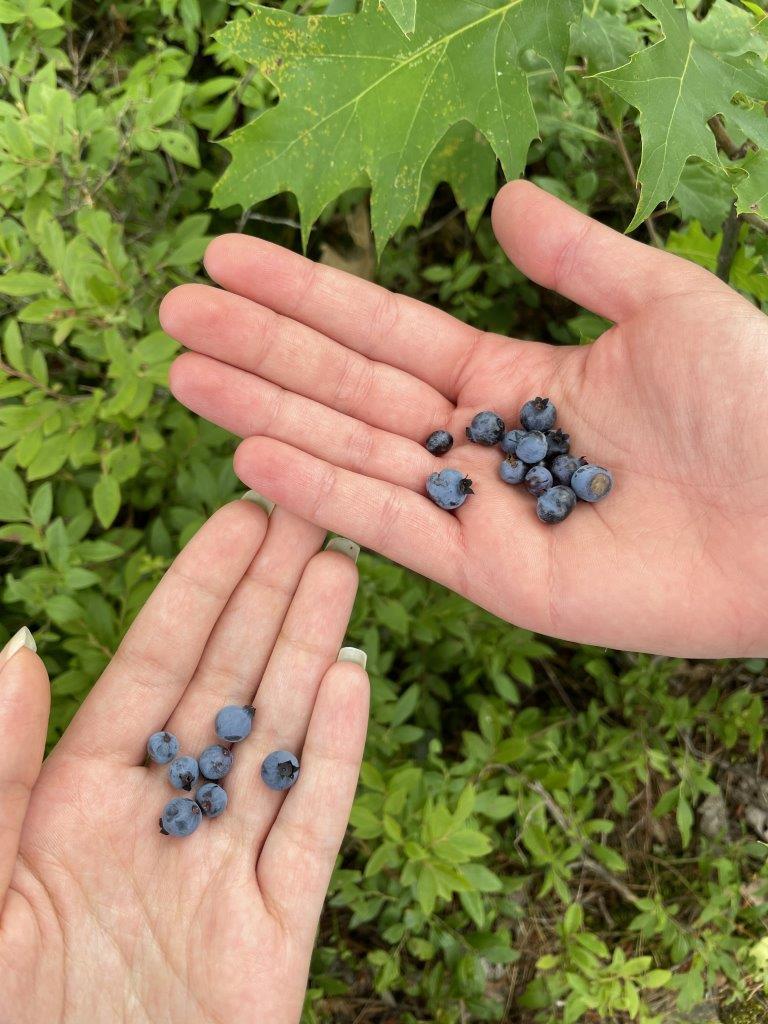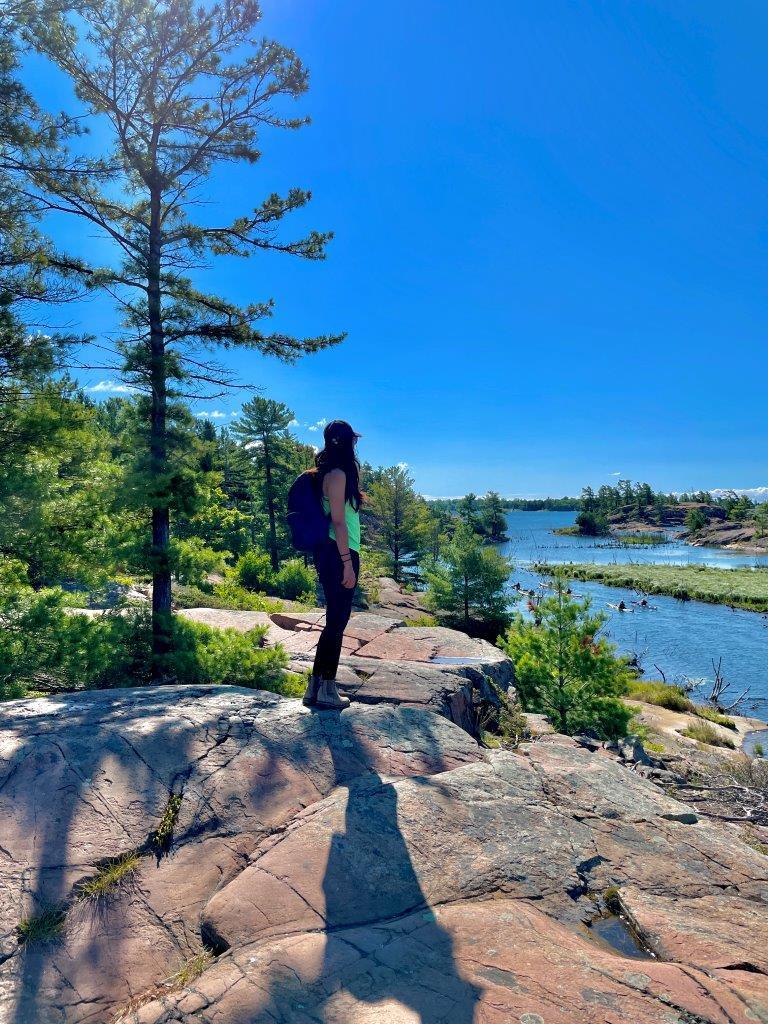ASTRONOMER IN RESIDENCE
Parisa Nozari
July 18 - July 31, 2022

Astronomer Parisa Nozari is a graduate student in Astronomy and Astrophysics at Queen's University. She studies star formation, specifically working on dust grains, tiny little sands spreading out through the interstellar medium and sometimes blocking our view to see objects in the sky. These same tiny little dust grains coagulate together to form stars and planets, so all the better to love them if you are into stars! When the weather is nice, she enjoys being outside, hiking, camping, stargazing.
Read Parisa's blog posts as an Astronomer in Residence:
Yooohooooo!!! I’m finally here. Today was a gray and rainy day to drive from Toronto. However, we ended up having a beautiful sunny day at Killarney. I’m super excited to be here, see you all, and get ourselves more interested in the wonders of the night sky and Astronomy.
Let’s get started…
I started my morning by editing my photos of last night's photography with a 14-23 Nikkor lens and Camera Nikon 3400D,
The exposure time for Milky Way photography was 15 seconds, Iso 6400, and focal length 2.5.
It gets cloudy after midnight, which was not a problem cause I had already taken my shots, and they turned out quite lovely.
I met incredible Kathleen at 12 pm to set this week's schedule with her, and here it goes:
Tomorrow, Wednesday, July 20th, at 2 pm, we'll be doing a drop-in-style program to let you people see the observatories during the day. Then on Friday 22end and Saturday 23rd of this week, I'll be doing 8 pm presentations at the amphitheater here in Park.
The topics would be mainly around the structure of our universe and go through some night sky tours with different celestial objects to see what is going on in our enormous universe.
And here is the excellent guide of the direction to the Amphitheater and Observatory that Tom Vassos, the previous astronomer, already mentioned in his blog while he was there, so I just put it here as a reminder.
Directions to the Killarney Park Amphitheater
Take the main entrance into the Park, pass the Visitor's Center, and enter the parking lot. Drive straight ahead and take the roadway at the far side of the parking lot. Follow the amphitheater signs, which look like three people in three chairs. You will veer to the left at two junctions, and then the amphitheater will be on your left.
Directions to the Killarney Park Observatory
Take the main entrance into the Park, pass the Visitor's Center, and Park at the far side of the main parking lot. Walk down the roadway at the far side of the parking lot for only a few meters, where you will see a pathway on your right side (just to the left of the sign warning about bears). Walk down that pathway for a few minutes until you come to an area with a few buildings. Keep walking straight ahead. You will find an open area with two telescope domes in the middle of those buildings. That is where we will meet.
Note: This area is only open to the public during scheduled Discovery Programs.
1 pm: I went to Killarney town with my friend to have Fish and chips in a very well-known “WORLD FAMOUS'' fish and chips. OHH, MON DIO, that was incredibly awesome and super fresh. Make sure you are not missing this place if you are around Killarney.
4-5 pm: as the weather was incredible, I decided to enjoy the park a bit before our program started tomorrow, so I went kayaking for the first time, jumping into the lake from the cliffs, and it was such an incredible experience here enjoying the nature at Killarney.
7 pm: Finally, I’m back to my new office, the doghouse with the internet, to research and prepare my topics for tomorrow’s program.
So excited to meet people at the observatory tomorrow :))
5 am: I drove my friend to Sudbury to catch her bus to Toronto; the gas price at Sudbury is higher than at Parry Sound, and the gas station is 30km south of the French river Trading post. If you’re camping at Killarney and looking for the most nearby place for gas, you can find it at a very good price at the gas station 30km south.
9 Am: As soon as I arrived in Killarney, it started raining, getting very heavy around midday, and continuing till 1:30.
1:30: We planned to have our program from 2-3 pm to see the sun and have a chat around the dome of the telescope. However, we decided to cancel the program as it was very risky to open the domes cause none of us would be happy if there would be water inside, right?
Unfortunately, the 16-inch ground has some difficulties being appropriately aligned, so we’re not going to have it operated during my time in Killarney. Hence, 10-inch will be our friend for the rest of the week to hopefully do some photography. Let’s see how easy and handy it would be to manually point it to celestial objects. I will update you about it in detail in the following days.
So, as the program is canceled, I’m spending the rest of the day in the doghouse working with slow internet connection due to the heavy rain we have had lately.
I may go for a short trail hike if it gets sunny a bit in the late afternoon.
Besides, Don’t forget that hopefully we are still supposed to have our next show on Friday at 8 pm at the Amphitheater.
I started my day working in the main office as it was a first aid workshop in the doghouse. The internet in the main office is Much faster than what I have in the doghouse, but it is still enough here to do my work.
After that, it was still cloudy, so I went for a short hike. However, when I saw a giant bear footmark on my way, I decided to come back and make the trail tomorrow with my friend cause I find it safer this way.
3 pm: I returned to the observatory playing with a 10-inch telescope to familiarize myself with it for tonight's photography.
The sky is supposed to be very clear tonight, and I'm not going to take it for granted and do some shooting.
Equipment notes:
I have a Nikon 3400D camera with an 18-55mm lens. I brought my t-rings to connect my camera to a 10-inch telescope. However, my t-ring is smaller than the eyepiece holder of the telescope. Fortunately, I found the nose in a storage box named "camera adaptors." This nose threads into my t-adapter, which allows me to place my camera into the standard 2" barrel of the eyepiece holder.
There are different types of adaptors in different sizes for the other cameras in the box tagged with "adaptor camera" in the storage space through the left door of the doghouse.
9 am: After having my coffee, I spent a couple of hours processing my images from last night's photography. I did the Milky Way and spent around 50 minutes shooting for star trails. Here are some tips for star trail imaging.
The ideal time for star trail photos is 60 minutes of shooting with 12 images of 5-minute or 120 images of 30-second exposure time each. I prefer shooting more instead of raising the exposure time cause you have more control of the processing after. These are some standard ranges of settings for your camera. However, you can play around with them to find the best works for you and the area you are doing your photography.
ISO: 3200-6400
F: 3.8-2.5
Exposure time for star trails is between 20-30".
But don't go over 15" for the Milky Way cause the stars start to trail.
12:30 pm: I also did some solar imaging with a 10-inch telescope. Kate very kindly helps me with aligning and tracking the telescope. I used the nose adapter (I described it in my previous blog ) to connect my camera to the telescope's eyepiece holder. Unfortunately, the hand panel of the 10-inch telescope is not working. Hence, it was very tricky to keep the object steady in the eyepiece or the screen of my camera for photography. We hope to be able to get some things with 16-inch ones manually to do some photography. I'll update you if we get some success with it.
4 pm: I'm preparing my presentation files for tonight's show at 8 pm at the amphitheater. The whole talk will be mainly about the first images the JWST telescope released recently. Many things are happening in those images, and it is a great opportunity to know our universe better and talk about different parts of astronomy.
9 pm: we had around 35 people come over, and they got very excited about the JWST telescope and the wonders of each first released image.
Last night was the only night I went to bed early, and I've been so jealous of people who said they saw the northern light at midnight last night.
I was surprised. It is so rare for northern light to happen in this latitude at this time of the year because it can usually happen in fall and winter, not in the summertime. However, it is what it is, so I decided to never go to bed before midnight while the sky is clear.
9 am: I had my breakfast and coffee beside the lake, jumped to the lake for a bit a got fresh to work for tonight's program.
9 pm: we had 20-25 people come to the show, which was terrific. We did a virtual night sky tour with Stellarium. Stellarium is a great night sky simulator that can easily be downloaded on your phone or laptop. It has many features that allow you to explore your local night sky and is very handy for finding constellations.
Many things are happening within different constellations, nebulae, star clusters, and multiple star systems. Hence, it is always helpful to have such an app to find visible objects easily to enjoy more.
For example, you can find the whirlpool galaxy by knowing where the Big Dipper is.
10 am: today was cloudy, so I went to Granite ridge trail with my friend. It is the easiest and fastest trail you can do in Killarney, and it gives you a fantastic view of George Lake, which is breathtaking. If you come to Killarney, ensure you're not missing it.
10 pm: it was a clear sky at night, so I decided to do some photography right beside the 16-inch telescope.
Tips for night photography: if you want to be in your picture with a Milky Way background, the settings of your camera should be in manual mode, and same as I wrote in my previous day's blog, the only thing that you need to do s to turn on the phone flash for a second and let the camera to do its 10-15 second exposure time imaging. This is the way to light up dark objects like "you" to be visible in your image.
9 am: we set up this week's schedule with Kathleen, and it is as follows:
Wednesday night: a drop-in program at the telescope at Killarney observatory
Friday, we have an afternoon program with the meteors.
Saturday at 8 pm amphitheater program doing a virtual night sky tour with Stellarium.
Enjoy the park “Chikanishing trail”: This trail is also one of the shortest but one of the most beautiful ones that you can enjoy if you just started being adventurous like me. You can also swim into Georgian Bay, the 6th largest lake in Canada, with an incredible view.
5 pm: it seems the sky will be clear tonight, so I’m preparing myself for practice photography and playing around with the telescopes a bit to see if we can manually point them to our desired objects or not.
There are some tips for night sky photography from my very good friend Lindsay Benson, she is a great photographer, and you can find her incredible night sky images at this week's Slideshow gallery.
very basic tips that will insure a great picture of the Milky Way
-be in an area with minimal light pollution
-the higher the altitude, the clearer the Milky Way
-always use a tripod or something to hold the camera steady while doing a long exposure
-Use a wide lens to capture most areas of the night sky. I like to use a 14-24 mm
The f-stop (lens) should be as open as possible to capture the faintest of stars (usually around 2.4/2.8)
ISO should be quite high, around 5000
Shutter speed should be around 20-30 seconds to allow the most amount of light to enter through the lens.
After having breakfast with my friend, we decided to go to one of the most beautiful trails in Killarney as it was the last day she was here.
The Cracks is a 6km trail. You have to climb the rocks at the trail's end to reach that breathtaking view of Georgian bay and the islands in the middle of it at this huge densest forest I've ever seen in my whole life. I promise you that it is worth it if you take a bit of a challenge and go for this hike if you come to Killarney.
3 pm: we took a long nap after the hike. Then I called Bruce to guide me to find objects throughout the 10-inch.
Kathleen and Bruce kindly helped me find the eyepieces I needed and guided me step by step, which was incredible because I could find M13, a globular star cluster in the Hercules constellation.
I started to practice finding the M13, and the most helpful was having the Stellarium app on my phone to find the location of my object and having a laser to point it cause you can find it easily through the finder. Then you'll easily be able to align the finder with the eyepiece.
Last night was mostly cloudy, and we got worried as we had already advertised our program to folks to do a drop-in program at the observatory. However, it got pretty clear at the exact time we wanted. So lucky :)))
I got M13, a globular star cluster in the Hercules constellation. I let people look at it through the eyepiece, which was an incredible experience for them to come to the dome and watch this fantastic object with their own eyes.
This cluster is one of the Messier objects, which is 22,180 light years away from earth, having quite old thousands of stars that are 11.5 billion years old on average. The radius of this little blob you see in the eyepiece is 72.502 light-years which is incredibly huge if you think about it because one light year is about 9 trillion km in distance.
We had 55 people come around and enjoy stargazing besides looking at M13 through the telescope, which makes us super happy to host so many of you at the telescope.
Today we had around 30 people come to our drop-in session to touch and look at different meteorites from the Moon and Mars.
We also had two very special Meteorites of Iron and Carbon. Some fun facts about them are as below:
Iron Meteorite:
The composition of this type of meteorite is primarily made of Iron, it is actually in the form of an Iron-Nickel alloy. The two principal minerals of this alloy are Taenite and Kamacite, which, when the meteorite is cut and etched in acid, is revealed in beautiful sets of striations known as Widmanstätten patterns.
Meteorites of this size usually originate from asteroids, the debris left over from the formation of the solar system. Attached by the Earth’s gravitational pull, they burn through our atmosphere and, if large enough, survive the fall to the ground. While the largest meteorites are on the order of a few pounds.
Allende Meteorite:
The fragment of this rock is a rare meteorite known as the Allende (pronounced A-Yen-Day) that fell in the region of Allende, Mexico in early 1969. It was donated to Killarney to celebrate the opening of the Waasa Debaabing observatory in 2010. This type is of a rare class of meteorites, known as carbonaceous chondrites, due to the chondrules found within them
Studies have shown that, while the Allende meteorite contains material known as Calcium Aluminum (CAIs), the Allende’s unusual CAIs date it to being at least 30 Million years older than the earth! Further investigation in the early 1970s found extremely rare isotopes such as Aluminum-26, not typically found within our solar system.
Current theory holds that the Allende meteorite contains “pre-solar” grains, material that originated before and beyond our solar system. This find is suggestive of an explosion of a nearby supernova, which compressed the interstellar gas cloud that formed the Sun, Moon, planets, and the rest of the solar system. The Allende meteorite is thus a tangible link to our cosmic origins.
The story of Sudbury:
Interestingly, it is believed that the large meteorite, impacting the Earth approximately 1.9 billion years ago, formed the Sudbury basin. The resulting explosion tore a crater in the Earth that, over time, was stretched by geological forces into an ellipse shape. The deposit of such large amounts of nickel and iron so long ago has had an impact on the city of Sudbury. It has become one of the largest mining communities in the world due to this extraterrestrial source of the material.
We had around 52 people come to the amphitheatre for my last show here in Killarney. We repeat the Stellarium program, teach them how to find summer constellations and some neat objects within them which are Messier objects to see with their binoculars or telescope. We also talk about the James Webb telescope and its incredible job, go through its first images and discuss its importance for the next 20 years for our understanding about the universe. It was also my pleasure to show them some of my photos that I took here at Killarney dark night sky and give them some tips for doing a very simple photography.
The view of the nature of yourself in a mirror “belies its rich cosmic history. The carbon in the trees and the silicon in the rocks came from the remnants of stars and supernovae. The distant mountains were built up by tectonic activity, driven, at least in part, from the energy of the protoplanetary disk. The water in the lakes may have had its origins in the early comets and/or asteroids. The vibrant sky is derived from our nitrogen-rich atmosphere and a recent volcanic eruption. The fish in the lake and the bird in the sky have common ancestors formed from organic compounds that may have been brought to the Earth by comets and asteroids eons ago. Finally, the iron within the hemoglobin is in your blood, and the blood of all those you know came from the cores of ancient stars that went supernova. We are such stuff as stars are made of and are thus, children of the Cosmos.”*
Goodbye,
Parisa.
*Quote from Ontario Park’s Eyes on the Skies posting, “From the Big Bang to beyond: the astronomical origins of the universe – part 3”

